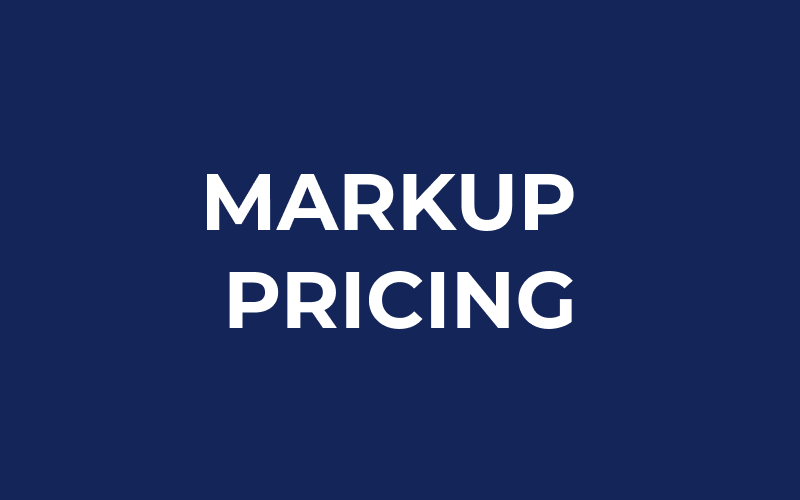
Markup pricing
Is a pricing strategy that involves taking the cost of a product and adding a certain percentage on top of it to set the final selling price for a product. This method is used by many businesses as it provides a straightforward and predictable way of setting prices, and helps to cover costs and generate profit.
When using markup pricing, it’s important to carefully consider the costs of production, including materials, labor, and overhead, to ensure that the markup is sufficient to cover these expenses and generate a profit. Businesses may also need to consider the competition, market trends, and customer demand to determine the right markup percentage.
Markup pricing in e-commerce and retail
In ecommerce, businesses can use technology and data analysis to help with their markup pricing strategy. For example, they can use software to analyze sales data and adjust markup percentages based on market trends and customer behavior. Additionally, they can use online tools to monitor competitor pricing and adjust their own prices accordingly.
The pricing strategy can be an effective for businesses of all sizes, but it is especially useful for small and medium-sized enterprises that need a simple and straightforward way of setting prices. This method also allows businesses to easily adjust prices based on changes in the market and customer demand.
In ecommerce and retail businesses, markup pricing can impact pricing in the following ways:
Determining profitability: Markup pricing helps businesses determine the profitability of a product by calculating the markup percentage and setting a selling price that will cover costs and generate a profit.
Pricing competitively: Businesses can use markup pricing to price products competitively by comparing the markup percentage to that of their competitors.
Setting prices for different product lines: Businesses can use markup pricing to set prices for different product lines by applying different markup percentages to different types of products.
Adjusting prices over time: Businesses can use markup pricing to adjust prices over time based on changes in the cost of the product or changes in the market.
Setting prices for different sales channels: Businesses can use markup pricing to set different prices for different sales channels, such as retail stores and online marketplaces, by applying different markup percentages.
Summary
Markup pricing is a widely used strategy in retail and ecommerce businesses for determining prices by adding a percentage to the cost of a product. By carefully considering costs and market factors, businesses can use this method to set prices that cover costs and generate profit.